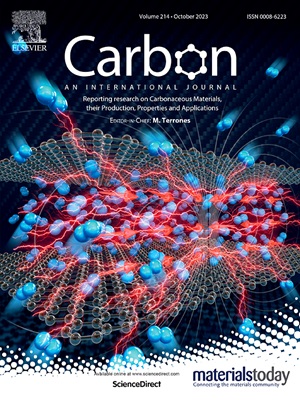Design strategies and research progress of macrostructure graphene-based electromagnetic shielding materials
IF 10.5
2区 材料科学
Q1 CHEMISTRY, PHYSICAL
引用次数: 0
Abstract
The proliferation of electromagnetic technologies and emergence of 5G communications have heightened concerns about electromagnetic interference (EMI) and radiation, which are increasingly jeopardizing human health and the operation of precision instruments. Electromagnetic shielding material is an indispensable part of modern technological development, and graphene has become an ideal candidate for EMI shielding due to its excellent electrical properties and structural advantages. In this paper, we first introduce the electromagnetic shielding mechanism, and then comprehensively review the recent progress of macrostructure graphene-based materials in the field of EMI research. The relationships between different structure preparation methods and shielding properties are systematically analyzed, with special emphasis on the effects of various macrostructure building strategies on material properties. Finally, the future development and challenges of graphene EMI materials are expected and summarized.
宏观结构石墨烯基电磁屏蔽材料的设计策略及研究进展
电磁技术的扩散和5G通信的出现加剧了人们对电磁干扰和辐射的担忧,电磁干扰和辐射正日益危害人类健康和精密仪器的运行。电磁屏蔽材料是现代科技发展不可或缺的重要组成部分,石墨烯以其优异的电学性能和结构优势成为电磁干扰屏蔽的理想材料。本文首先介绍了宏观结构石墨烯基材料的电磁屏蔽机理,然后对近年来宏观结构石墨烯基材料在电磁干扰领域的研究进展进行了综述。系统分析了不同结构制备方法与屏蔽性能之间的关系,重点讨论了各种宏观结构构建策略对材料性能的影响。最后,对石墨烯电磁干扰材料的未来发展和面临的挑战进行了展望和总结。
本文章由计算机程序翻译,如有差异,请以英文原文为准。
求助全文
约1分钟内获得全文
求助全文
来源期刊

Carbon
工程技术-材料科学:综合
CiteScore
20.80
自引率
7.30%
发文量
0
审稿时长
23 days
期刊介绍:
The journal Carbon is an international multidisciplinary forum for communicating scientific advances in the field of carbon materials. It reports new findings related to the formation, structure, properties, behaviors, and technological applications of carbons. Carbons are a broad class of ordered or disordered solid phases composed primarily of elemental carbon, including but not limited to carbon black, carbon fibers and filaments, carbon nanotubes, diamond and diamond-like carbon, fullerenes, glassy carbon, graphite, graphene, graphene-oxide, porous carbons, pyrolytic carbon, and other sp2 and non-sp2 hybridized carbon systems. Carbon is the companion title to the open access journal Carbon Trends. Relevant application areas for carbon materials include biology and medicine, catalysis, electronic, optoelectronic, spintronic, high-frequency, and photonic devices, energy storage and conversion systems, environmental applications and water treatment, smart materials and systems, and structural and thermal applications.
 求助内容:
求助内容: 应助结果提醒方式:
应助结果提醒方式:


